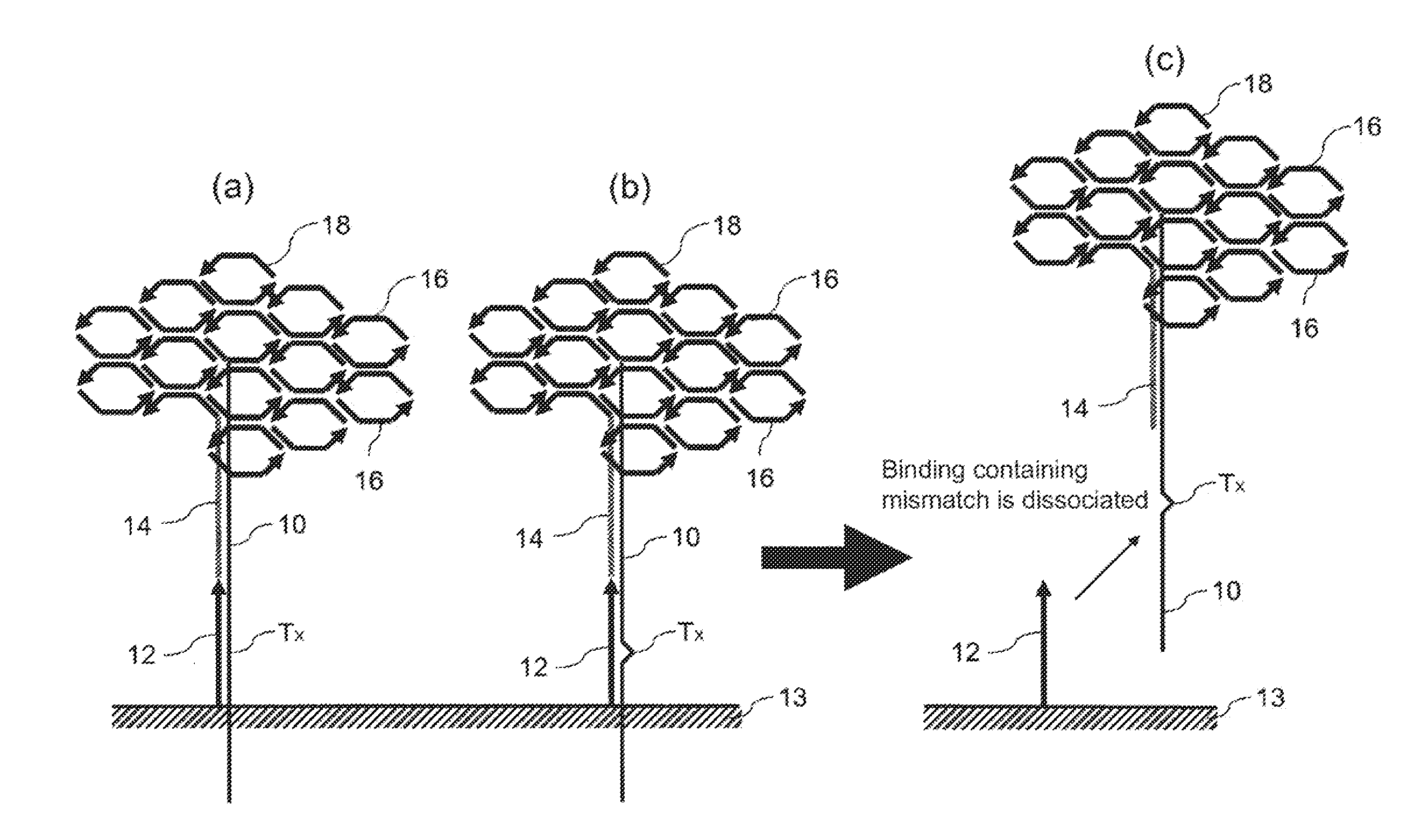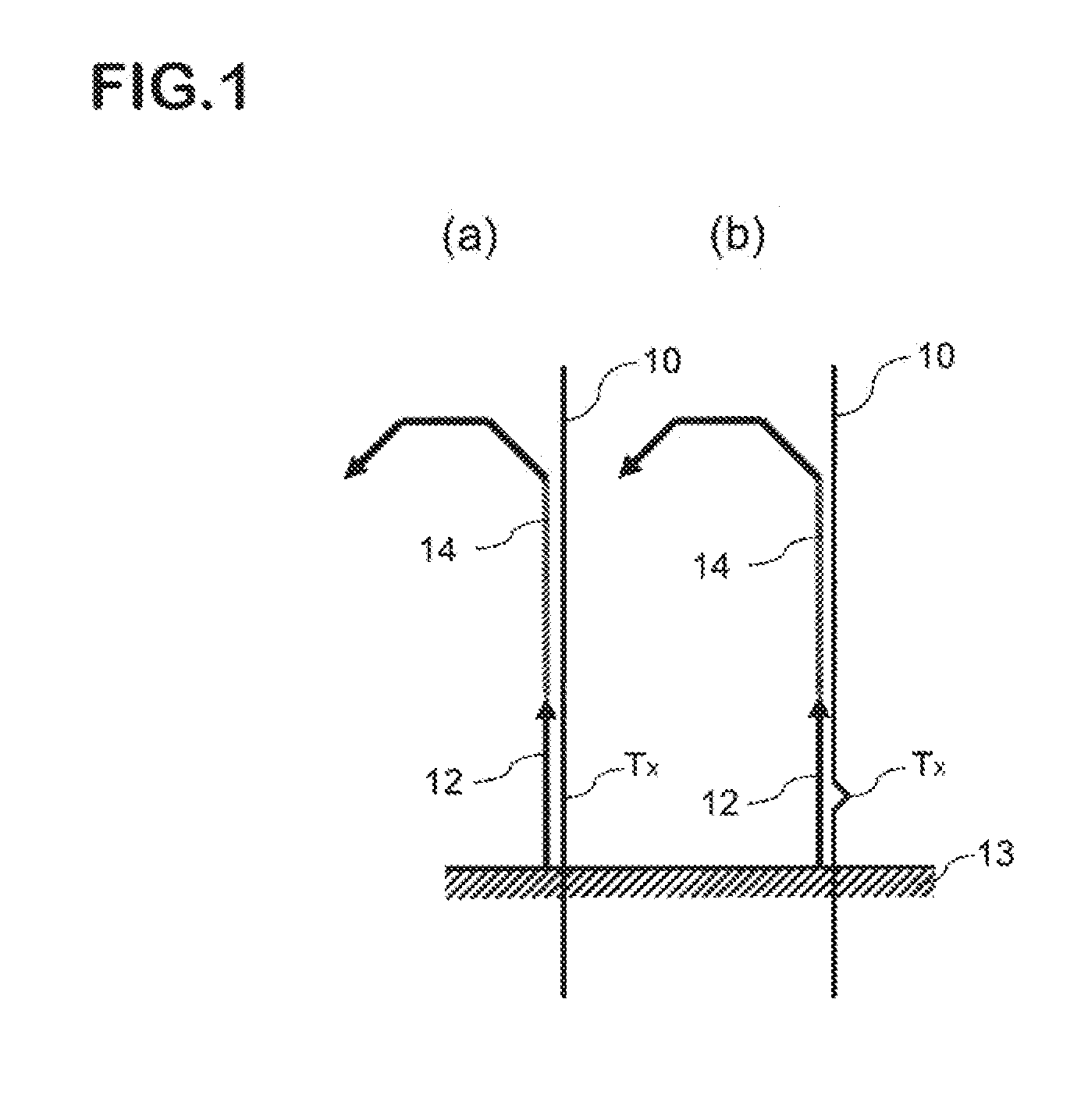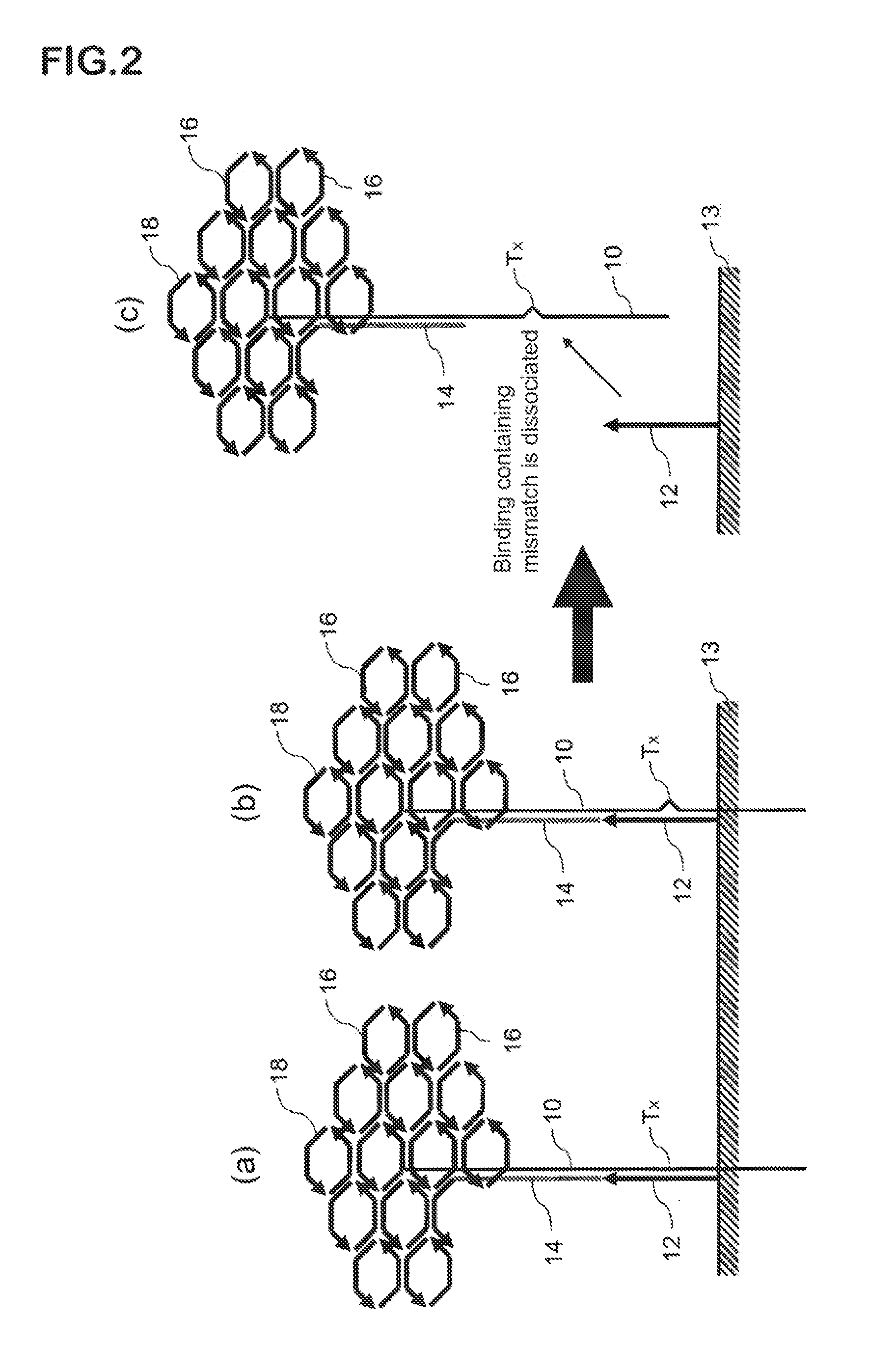Method for detecting nucleotide mutation, and detection kit
- Summary
- Abstract
- Description
- Claims
- Application Information
AI Technical Summary
Benefits of technology
Problems solved by technology
Method used
Image
Examples
example 1
[0149]SNP detection was performed by the detection method for a mutation gene of the present invention using a polymorphism of a nucleotide at position 857 of N-acetyltransferase 2 (NAT2) gene as a target.
[0150]Two kinds of alleles, i.e., guanine (G) and adenine (A) alleles are present at position 857 of the NAT2 gene. Thus, part of regions of the NAT2 gene including the position 857 was amplified by a PCR, and an experiment for assessing the type of the SNP was performed using its PCR product as a target.
[0151]A region of about 700 bases including an SNP site at position 857 of NAT2 was amplified from a human genome specimen by a PCR. Sequences of primer DNAs used in the PCR are shown below.
(SEQ ID NO: 1)5′-CGGTTTTCAGACCACAATGTTAGGA-3′(SEQ ID NO: 2)5′-TGAGTTGGGTGATACATACACAAGG-3′
[0152]The composition of the PCR reaction solution is as follows: 1× Phusion High-Fidelity DNA Polymerase Buffer (Finnzymes); Phusion High-Fidelity DNA Polymerase: 0.02 U / μL; each primer DNA: 500 nM; each d...
example 2
[0160]An experiment was performed in the same manner as in Example 1 except that an assist probe-2 having the following base sequence was used in place of the assist probe-1 as the second nucleic acid probe. The assist probe-2 is a nucleic acid probe having a region complementary to the PCR amplification product and a base sequence identical to part of the base sequence of HCP-1 (sequence ZYZ), and is configured so that the capture probe and the assist probe-2 hybridize with the PCR amplification product in a state in which the probes are located away from each other by 1 base. FIG. 19 shows the results.
Base sequence of assist probe-2 (5′-T2(1)′-Z-Y-Z-3′)(SEQ ID NO: 8)5′-ATTTAGAATAAGGAAC-GTTCGCCATAGACG CCACATTCAGACCCGTTCGCCATAGACG-3′
example 3
[0161]An experiment was performed in the same manner as in Example 1 except that an assist probe-3 having the following base sequence was used in place of the assist probe-1 as the second nucleic acid probe. The assist probe-3 is a nucleic acid probe having a region complementary to the PCR amplification product and a base sequence identical to part of the base sequence of HCP-1 (sequence ZYZ), and is configured so that the capture probe and the assist probe-3 hybridize with the PCR amplification product in a state in which the probes are located away from each other by 2 bases. FIG. 19 shows the results.
Base sequence of assist probe-3 (5′-T2(2)′-Z-Y-Z-3′)(SEQ ID NO: 9)5′-TTTAGAATAAGGAACA-GTTCGCCATAGACG CCACATTCAGACCCGTTCGCCATAGACG-3′
[0162]As shown in FIG. 19, an SNP was able to be detected with high sensitivity by the method of the present invention. In addition, a highly allele-specific signal was obtained in any of Example 1, in which the first nucleic acid probe and the second n...
PUM
| Property | Measurement | Unit |
|---|---|---|
| Sensitivity | aaaaa | aaaaa |
Abstract
Description
Claims
Application Information
 Login to View More
Login to View More - R&D
- Intellectual Property
- Life Sciences
- Materials
- Tech Scout
- Unparalleled Data Quality
- Higher Quality Content
- 60% Fewer Hallucinations
Browse by: Latest US Patents, China's latest patents, Technical Efficacy Thesaurus, Application Domain, Technology Topic, Popular Technical Reports.
© 2025 PatSnap. All rights reserved.Legal|Privacy policy|Modern Slavery Act Transparency Statement|Sitemap|About US| Contact US: help@patsnap.com



